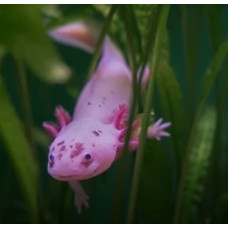Fish larva - post-embryonic stage of fish development from the moment of the beginning of mixed feeding to the moment of scales laying and acquiring the shape characteristic of the species. Fish larva leads an independent way of life, actively feeds, grows and develops.
Usually, a larva is said to be present when, during the individual's individual development, it undergoes a transformation, or metamorphosis, a significant change in structure. As a rule, larvae do not have a developed sexual system, although in some groups there is neoteny or pedogenesis (gonads begin to function in the larval phase). Larvae are known in many marine and freshwater invertebrates (e.g., ringworms, mollusks, echinoderms), insects with complete transformation, and a number of vertebrates (e.g., some fish and amphibians). Many characteristic larvae have been given independent names. In some cases (e.g., echinoderms), this was due to the fact that they were initially considered to be independent species of living organisms because of their significant differences from adult forms.
The larval period is the period of the life cycle that begins with the transition to active external feeding, with larval organs and traits preserved, while the appearance and internal structure have not yet assumed the form of an adult organism.
Larval stage in fish development - the period of fish development from the moment of hatching from the egg to the end of metamorphosis (transformation), usually coinciding with the appearance of scales on the sides of the body and with the acquisition of the fry appearance, not different from adults. A larva with a yolk sac is sometimes called a prelarva. Depending on the temperature, the larval stage lasts several days (up to 10). Larvae stay in the shallow coastal zone in thickets of soft vegetation, where they begin to feed on small crustaceans.
Larva
Tags: larva



